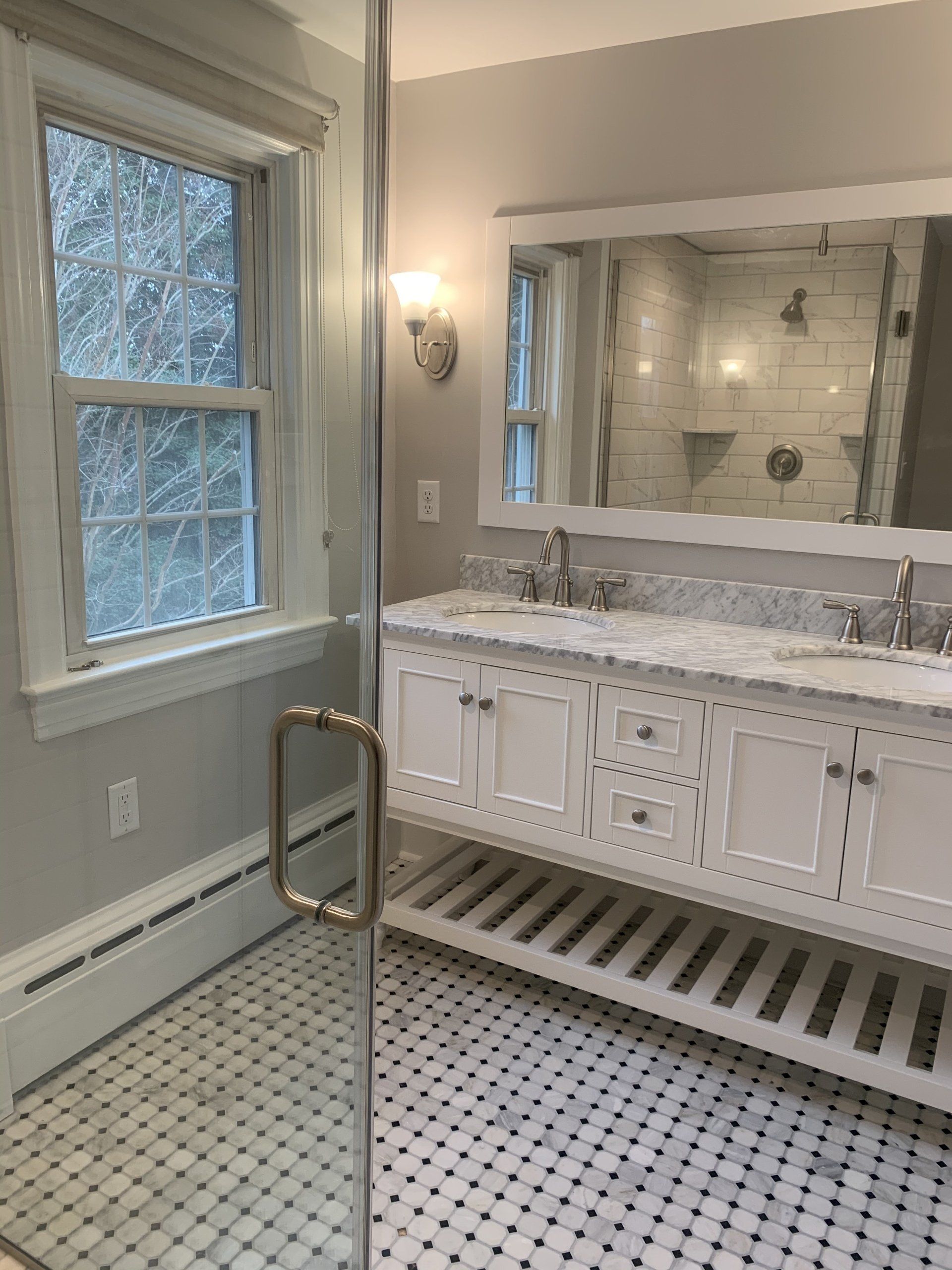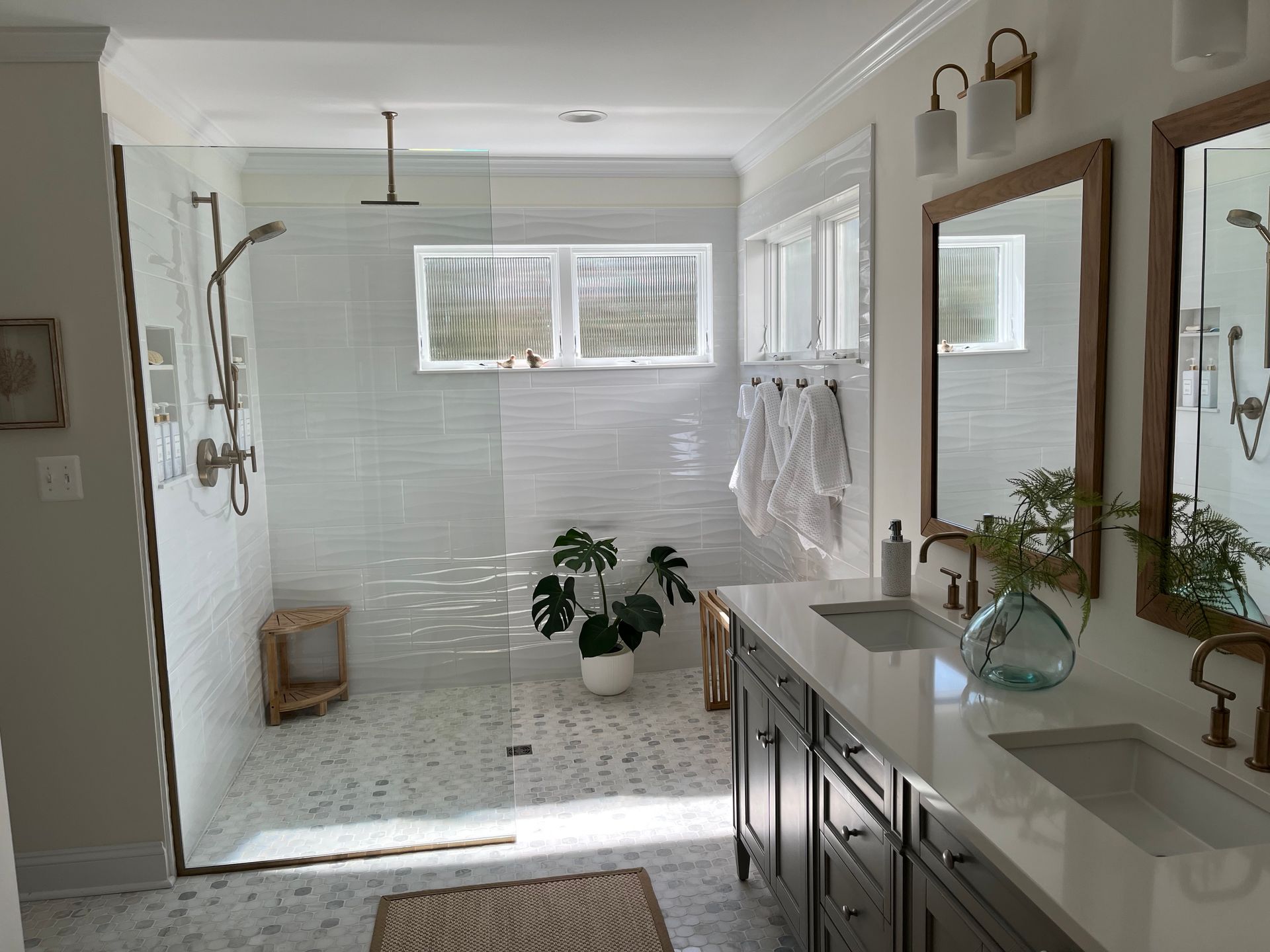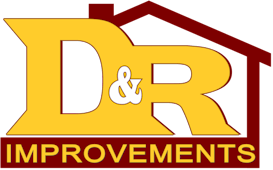By David Dunmyer
•
September 20, 2024
A bathroom can make or break a home purchase deal. And while a bathroom remodel may not necessarily recoup every cent you spent, it’s one of the most value-added improvement tasks you can take on if you’re thinking about selling. Here’s what you need to know about the best bathroom upgrades for resale value. Why Do Bathroom Remodels Add Value? Bathrooms (and kitchens) are where people spend the most time in their homes. So, a professional bathroom revamp is likely to get attention when it’s time to show your home to potential buyers and entertain offers. In fact, homeowner investment in renovation and remodeling projects grew almost 3% to $420 billion in 2020, as a study by Harvard University’s Joint Center for Housing Studies (PDF) found recently. Bathroom remodels usually have the highest return on investment (ROI). The average national ROI on a bathroom remodel is about 72.7%. That means that for every dollar you spend improving some part of your bathroom, you’ll see a $1.72 increase in the value of your home. To get the most out of your remodel, spend some time researching the most valuable upgrades for resale, desired finishes, and trends in bathroom design. Which Bathroom Features Increase Resale Value? Upgrading your bathroom can increase your home’s resale value, but for maximum return on investment, carefully evaluate your home and current bathroom and how it matches up with buyer priorities. Maximize your budget by choosing bathroom remodel ideas and upgrades that fit your home, neighborhood, and home value while aiming to improve usable space and quality. Bathroom Addition If you only have one bathroom, consider adding a new one instead of spending money to makeover the existing one. That’s especially true if you have more than two bedrooms; buyers with young children almost always expect more than one full bath to make evening bath time easier. For your investment in a bathroom addition, you can expect a return of about 55% for either a midrange or an upscale addition. Upgrade to a Walk-In Shower If your current shower is ugly, dated, hard to get into, or part of an old shower-tub combination that isn’t very inviting, consider replacing it with a walk-in shower. Partially fueled by home improvement shows that feature bathrooms with gorgeous, spa-like walk-in showers, many homebuyers are seeking bathrooms that look like and function as luxurious oases. Along with spacious, convenient places to bathe, walk-in showers also offer better accessibility and safety, help save water, reduce upkeep and cleaning time, and make bathrooms look modern. Call a local bathroom remodeler to learn what it will take to convert your tub to a walk-in shower. Refinish a Bathtub Ugly bathtubs make bathrooms appear dated, dirty, and undesirable. And that’s not what you want when selling your home. An easy and affordable way to make your bathroom look better is to refinish existing bathtubs that are in otherwise good condition. Refinishing is the process of sanding down and recoating a bathtub with a new finish, and bathtub refinishing costs can be surprisingly low. You can do it yourself with refinishing kits available at hardware stores or if you don’t have the time or desire to DIY it, hire a bathtub contractor to reglaze it for you. Refinishing lets you choose a new color, cover scratches and damage, get rid of stains, preserve the existing tub for years to come, and skip the expense and disruption of replacing an old tub. Vanity, Faucet, and Countertops It’s a relatively small part of your bathroom real estate, but an upgrade here packs a seriously positive punch. Consider swapping out a pedestal sink for a double-sink vanity with storage. Or upgrade your countertops to a more durable, modern finish like granite. If you make smart material choices, you can expect to recoup much of your bathroom remodel cost related to vanity and countertop upgrades. Flooring If the grout is beyond scrubbing, the tile looks dated, or the flooring is vinyl or a less-desired material, replace the floor with ceramic or porcelain tile for a long-lasting waterproof finish. If you’re in an area where winter weather runs exceptionally cold, consider installing heated floors in your bathroom to make morning showers much more pleasant. Radiant flooring is highly desirable and very efficient. For these reasons, you can expect a very good return on your investment—up to 100% in some cases. Cabinets Even something as straightforward as swapping outdated hardware for a sleeker finish (such as brushed nickel or bronze) can liven up the entire bathroom. Also, consider refacing sturdy and functional cabinets for a more modern look that will appeal more to potential buyers down the road. Retiling the Surround If the bathtub itself is in good shape, with no nicks, rust, or discoloration, then you can save some money and still see a significant improvement by simply replacing the bathtub’s surround or wall. A professional tile contractor should change or replace your tile. Lighting Lighting fixture updates can greatly impact the overall look and feel of the entire bathroom. Outdated lighting can often make the space look outdated or even dingy and drab. That’s especially true if you do any other aesthetic updating, such as painting the bath or adding new cabinetry or hardware. Look for modern lighting fixtures that match the finish of the bathroom fixtures, and choose a variety of light sources to provide both soft ambient lighting and bright vanity lighting. Ventilation Ventilation improvements not only make the bathroom more pleasant to use but can also help prevent mold or mildew growth on the ceiling. If your ventilation is less than ideal, consider updating it to protect your investment. Accessibility As the U.S. population ages, accessibility will be an increasingly important concern. Future homeowners who can’t access the home’s most important features may not want to go to the expense of renovating the space themselves. Widening doorways, adding support bars, and changing a standard bathtub to a walk-in shower area are valuable remodels that will help improve your home’s resale value. How to Improve Your Bathroom Remodel ROI When remodeling for resale, getting a bigger return on your investment is the goal. Carefully review your options and research the upgrades that will get you the biggest bang for your remodeling buck. Here are some of the best ways to spend your bathroom remodeling budget. Prioritize Repairs Over Cosmetic Changes Sometimes, the remodel budget means that you must make some potentially difficult decisions. How well your bathroom serves its function is much more important than how it looks. So, if there’s any aspect of the room that isn’t up to par, fix it before upgrading the flooring or the bathtub. If your bathroom suffers from any items that need repair, like leaks or dripping fixtures, cracked tiles, water infiltration, or mold, you’ll definitely want to prioritize those repairs over cosmetic changes. Focus on Low-Cost and DIY Upgrades Another way to increase the ROI on your bathroom upgrades is to choose low-cost projects you can do yourself in a weekend or so. DIY upgrades for your bathroom can include: A fresh coat of paint that delivers a powerful facelift to a tired bathroom. Blue bathroom paint can increase a home’s resale value by more than $5,000. Swapping out your existing lighting for a fixture that’s a little more up-to-date. Adding vertical shelves for more attractive storage options. Replacing your existing mirror with a newer model. Installing a new low-flow toilet with a more modern, elongated design at comfort height. These upgrades will cost much less than major remodels yet will still revive a lackluster bathroom’s look and feel for potential home buyers, thus adding to your resale value. Think Twice Before Investing in a Luxury Remodel Luxury upgrades tend to offer a lower return than standard remodels in some markets. Decadent upgrades that don’t fit the home’s overall value can make a remodel seem out of place. Some buyers shy away from homes with too-fancy bathrooms that don’t fit their lifestyle. If you plan to live in your home for a while and want a luxury bathroom, go ahead and splurge. But if you’re putting your home on the market or are banking on an upscale bathroom remodel to dramatically improve your home’s value, you might want to proceed with a remodel with lower upfront costs. Keep Your Design Neutral If you’re remodeling your bathroom with an eye on maximizing your ROI, it’s best to keep all your design choices fairly neutral. Stick to a neutral palette and choose a bathtub, cabinet, vanity, and fixture styles that are fairly classic or traditional. Of course, if you’re planning to stay put for a few years, you might opt to exercise your design flair and get as creative as you like to fit your own design preferences. Talk to Your Local Real Estate Agent Before you make a final decision about upgrading your bathroom in anticipation of a sale, ask your real estate agent to tell you what home improvements will bring the highest ROI in your area. This answer can definitely vary from place to place, and your agent is in the best position to give you the scoop. Then, to make sure the job’s done right, hire a professional home remodeler in your area to complete the work. Annie Sisk contributed to this piece. Remodels That Won’t Bring in a Significant ROI Not all bathroom upgrades or modern bathroom ideas will add a lot to your home’s resale value or its appeal to potential buyers. For example, jet tubs and steam showers might seem like a great idea in theory, but in practice, they can be difficult to maintain and frequently break down, requiring home repair visits that quickly add up. That said, if adding a jet tub appeals to you, and you’re prepared for the added expense, by all means, add it and enjoy! Just don’t expect any significant ROI on these upgrades. Cost to Remodel Your Bathroom Remodeling a bathroom costs between $6,630 and $17,540 , depending on the materials and fixtures you choose and the size of your bathroom. The average cost for most bathrooms will be about $12,000 . Luxury features like heated towel racks, rainfall shower heads, and custom cabinetry can all increase the price of your remodel, while choosing pre-made parts for your shower surround, vanity, and storage can all reduce the cost. DIY vs. Hiring a Pro Because this project involves plumbing and electrical work, it requires help from a local bathroom remodeler. While you might choose to DIY some smaller tasks like tile work, installing fixtures, or painting to reduce the price of labor on your project, doing your own plumbing or wiring isn’t a good idea. Original post by: Becca Lewis Original Post: https://www.angi.com/articles/which-bathroom-features-increase-resale-value.htm?CID=SEM.E001.P001.M002.G002.V000.C000.X000.Y000.Z000&c_id=%7BAdId%7D&disablegtm=true&entry_point_id=32985368&entry_point_id=32985368&gad_source=1&gatc=%7BBidMatchType%7D&gclid=CjwKCAjwps-zBhAiEiwALwsVYWCZQubWw8wTooP7-zpElDQq3CTgaJXNJy_144cC4Z4TspaaQme7MhoCelIQAvD_BwE&iv_=__iv_p_1_a_928634121_g_45147435286_w_kwd-300767045024_h_9007999_ii__d_c_v__n_g_c_575957806775_k_angie_m_e_l__t__e__r__vi__&kw_id=%7BOrderItemId%7D&m=cammgsemalb




